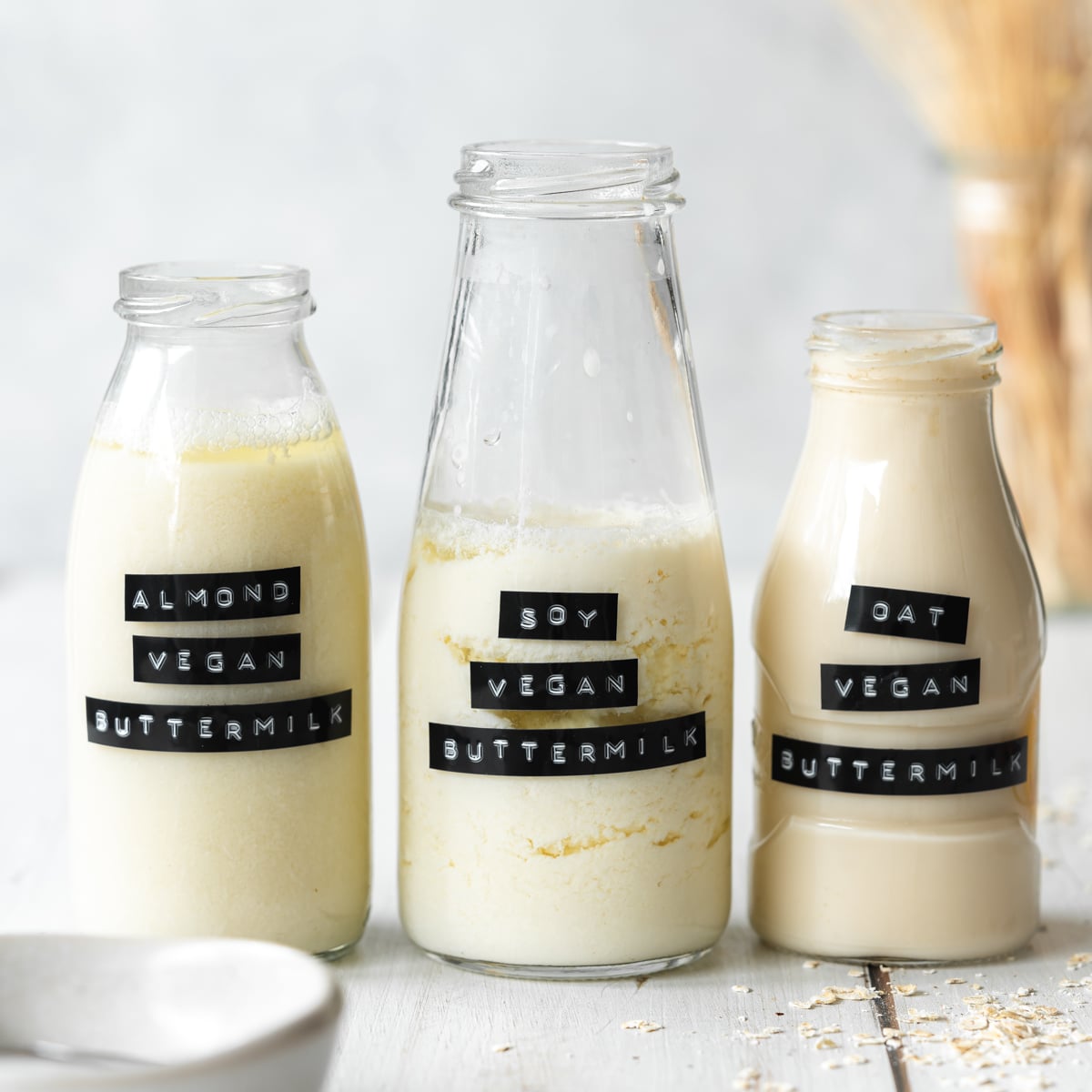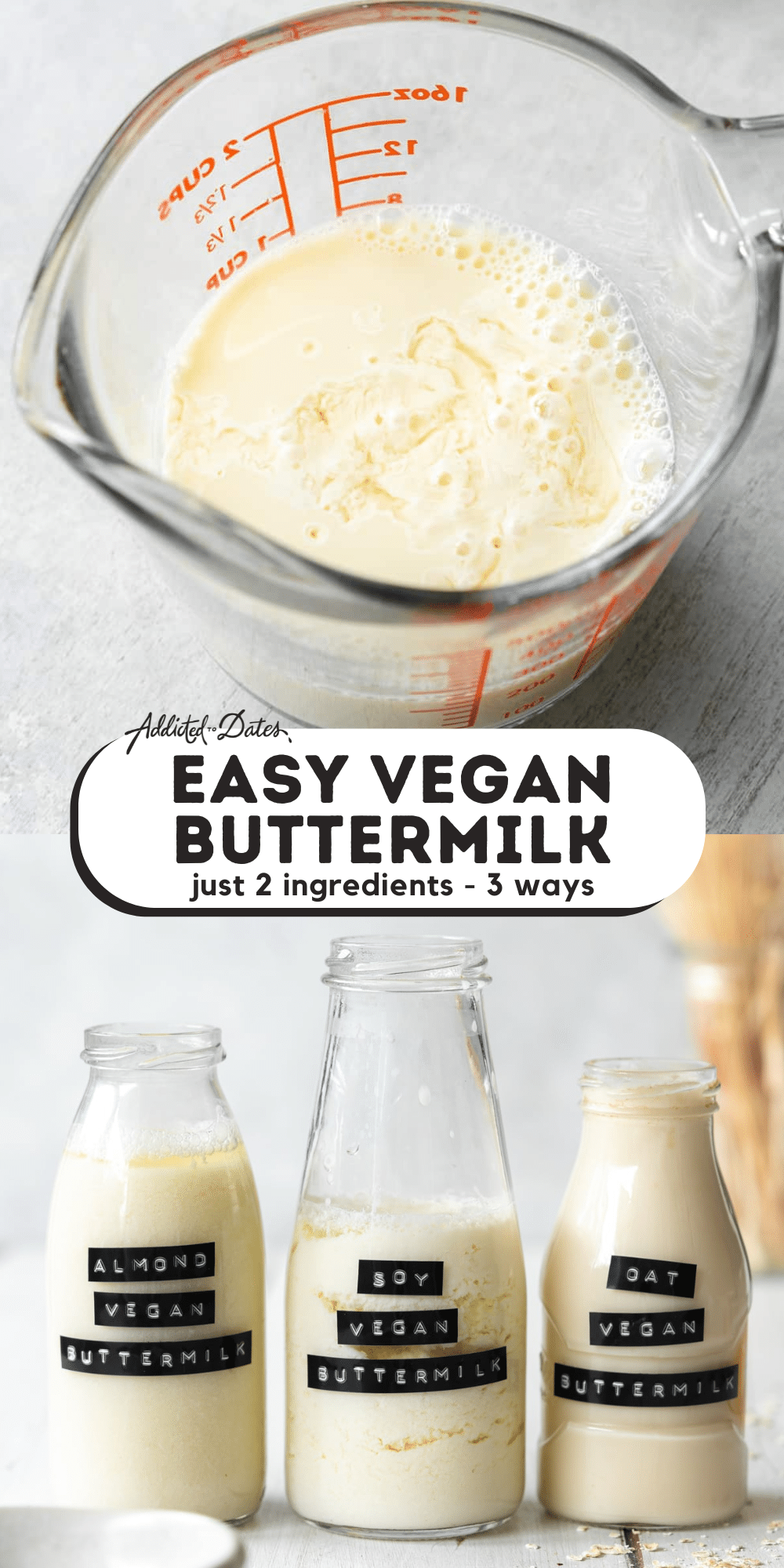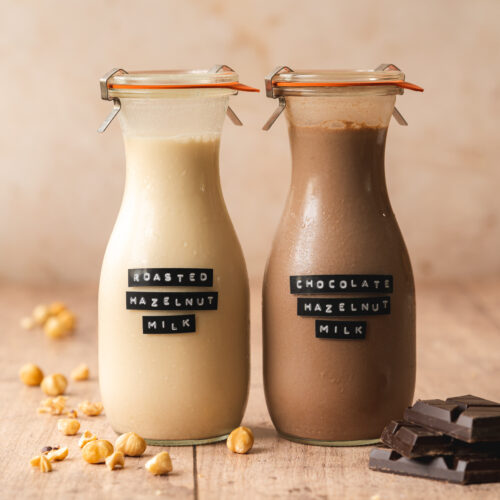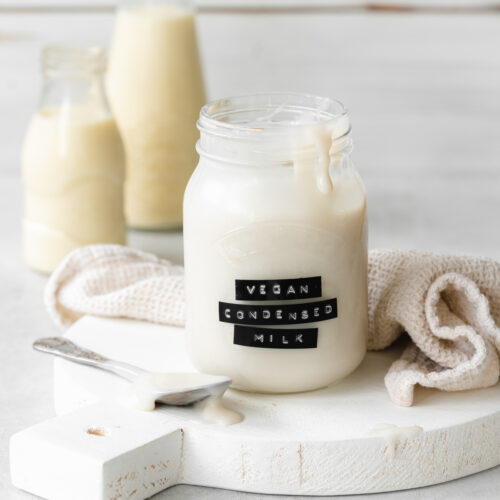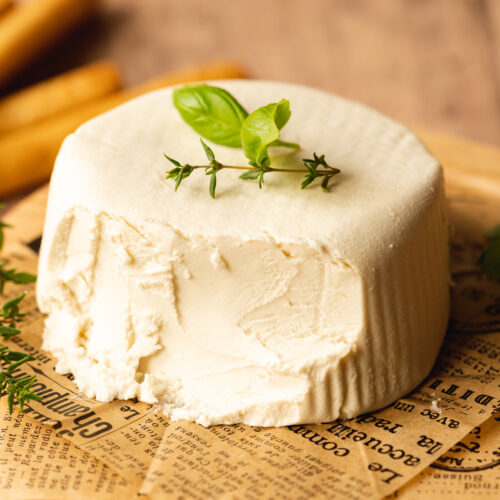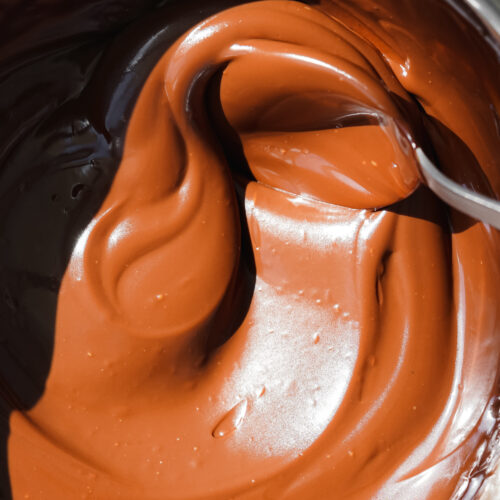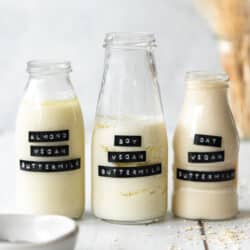Homemade vegan buttermilk, or "soured milk", is called for in a lot of vegan baking, especially in cakes, cupcakes, scones, and pancakes.
Dairy-free buttermilk reacts with baking soda to produce carbon dioxide, which causes baked goods to rise. This makes it a great leavening agent for vegan recipes.
People often ask me whether soy milk can be swapped for oat or almond milk in this recipe. So, I tested all three plant-based milks to find out which works best as a dairy-free buttermilk substitute - so you don’t have to!
Jump to:
🗒 What Is Buttermilk?
Traditional buttermilk is not vegan and is made from the liquid left as a byproduct of making cream. However, commercial buttermilk is simply soured milk that has added lactic acid bacteria to create a similar effect. This makes it super easy to create an alternative buttermilk using non-dairy milk.
When acid is added to milk, it will curdle. This happens as the introduction of acid lowers the pH level and the milk protein molecules unwind. This process is referred to as protein denaturing (source: The Kitchn). To make your own buttermilk, you need non-dairy milk that contains protein and an acid.
🥛 Ingredient Notes
Unsweetened soy milk is the best option for making vegan buttermilk, thanks to its high protein content at around 6-10 grams per cup, comparable to cow's milk.
When I tested all three types of plant-based milk, almond milk curdled slightly, while oat milk barely curdled at all. You can see the full results in the FAQ section at the end of this post.
Though I haven’t tested them in baking, pea milk (8g protein per cup) and hemp milk (3g per cup) also have higher protein levels and are likely to curdle well.
For acidity, apple cider vinegar is ideal for curdling plant milk. White vinegar or lemon juice can also be used effectively.
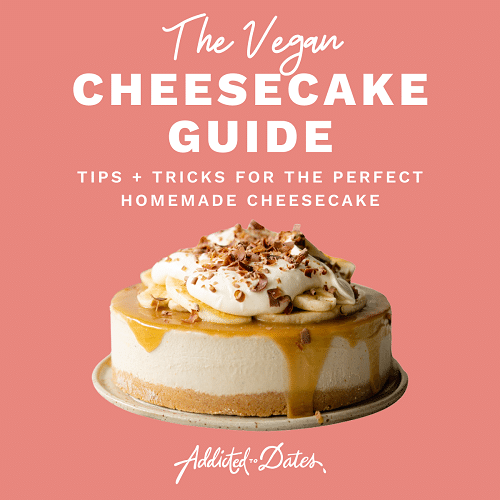
Get Your Free E-Book!
Sign up to the Addicted to Dates newsletter for your FREE Guide To Vegan Cheesecakes!
🥣 Instructions
Find the complete list of ingredients, quantities, and instructions in the recipe card at the end of this post.
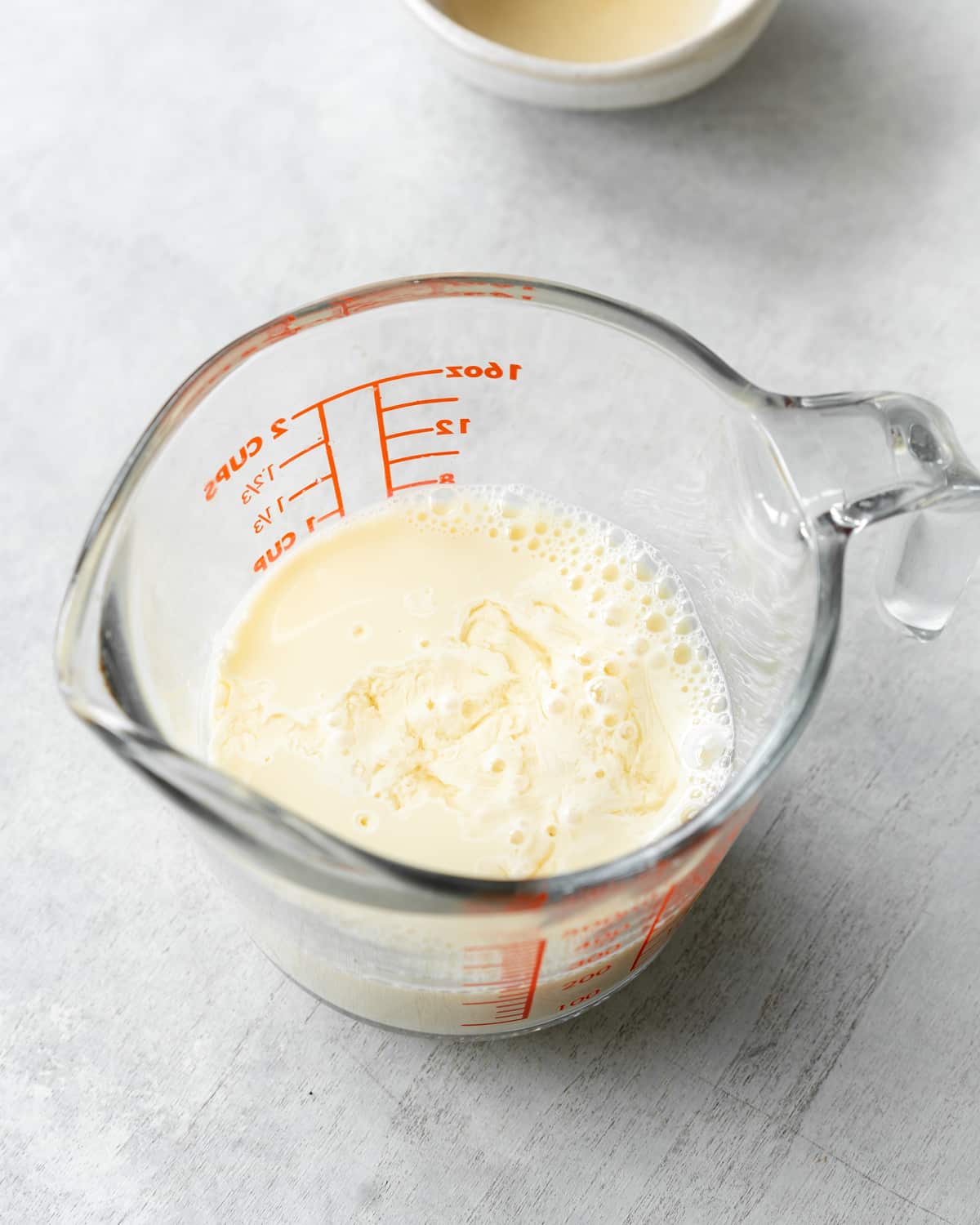
Add a cup of milk and a tablespoon of apple cider vinegar to a mixing bowl or measuring jug, stir, and allow it to sit for 3 minutes. If you're using milk with a lower protein content, it can take up to 10 minutes for the mixture to curdle.
💭 Recipe Tips
Unless a recipe calls for chilled buttermilk (like my buttermilk pie crust), it's best to use room temperature ingredients.
Soy milk is the best vegan substitute for dairy milk in terms of protein content, curdling ability, and performance in baking. Almond milk and oat milk are fine to use if the recipe also calls for baking soda, as the acids will react during baking.
If using almond milk or oat milk, you may need to wait up to 10 minutes to see the milk curdle. Soy milk takes about 3-5 minutes to turn into buttermilk.
🥧 Ways To Use Homemade Buttermilk
- Vegan buttermilk is a staple in most vegan cakes, muffins, and cupcakes.
- It adds a tender consistency and a hint of tangy flavor to this buttermilk pie crust.
- A staple in bread recipes like vegan buttermilk biscuits, cinnamon rolls, and quick breads like banana bread and brown bread.
- You can also add leftovers to soups, stir-fries, salad dressings, and curries for a delicious, tangy flavor and creamy consistency.
💬 FAQs
This is usually down to the type of milk used. As mentioned above, the protein content of milk is key to getting it to curdle and become buttermilk.
In vegan baking, buttermilk plays several important roles - leavening, adding flavor, improving texture, and tenderizing baked goods. Since eggs aren’t used, buttermilk becomes even more essential. It reacts with baking soda to help baked goods rise properly. For this reason, I don’t recommend substituting plain plant milk when a recipe specifically calls for plant-based buttermilk.
I find that soy milk makes the best vegan alternative to buttermilk. As shown below, it curdled much better than almond or oat milk.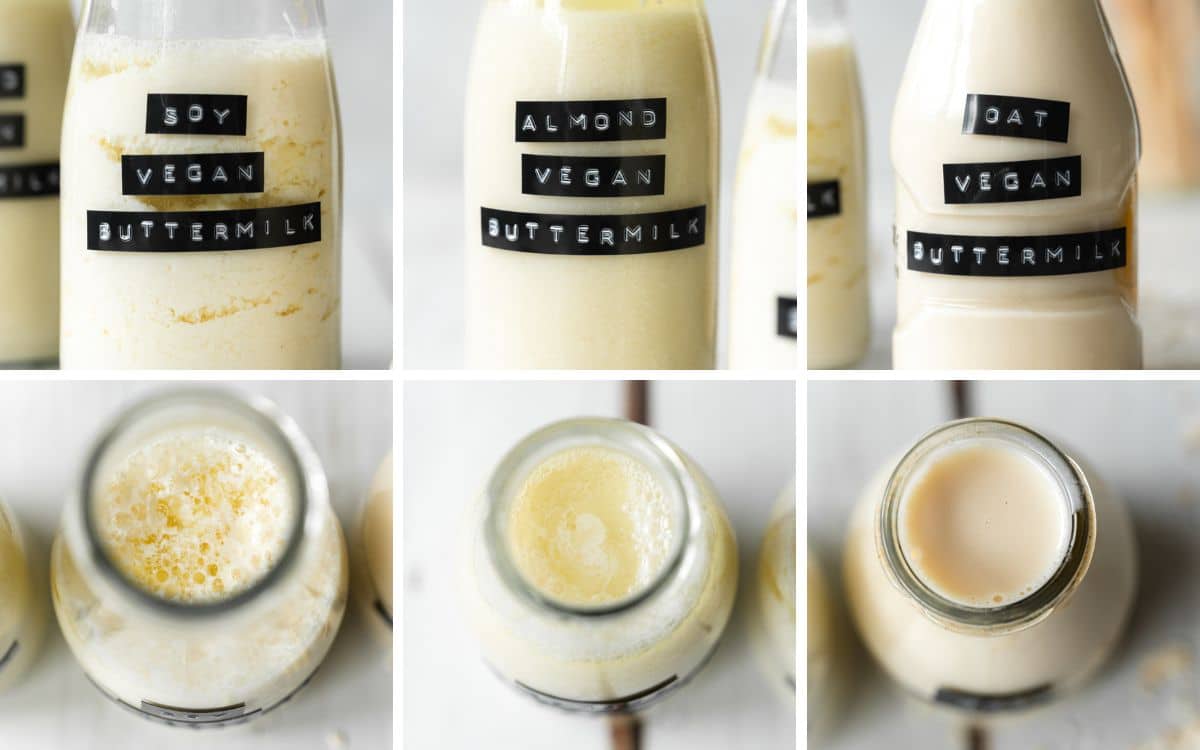
You can store it in an airtight jar in the refrigerator for up to 3 days. However, since it takes only a few seconds to prepare, it's best to make it fresh right before using it in a recipe.
Yes, you can freeze leftover buttermilk in an airtight container or jar. If using a glass jar, make sure to leave space for the liquid to expand as it freezes. To thaw, simply place the buttermilk in the fridge overnight. Before using it in your recipe, shake the jar well to combine.
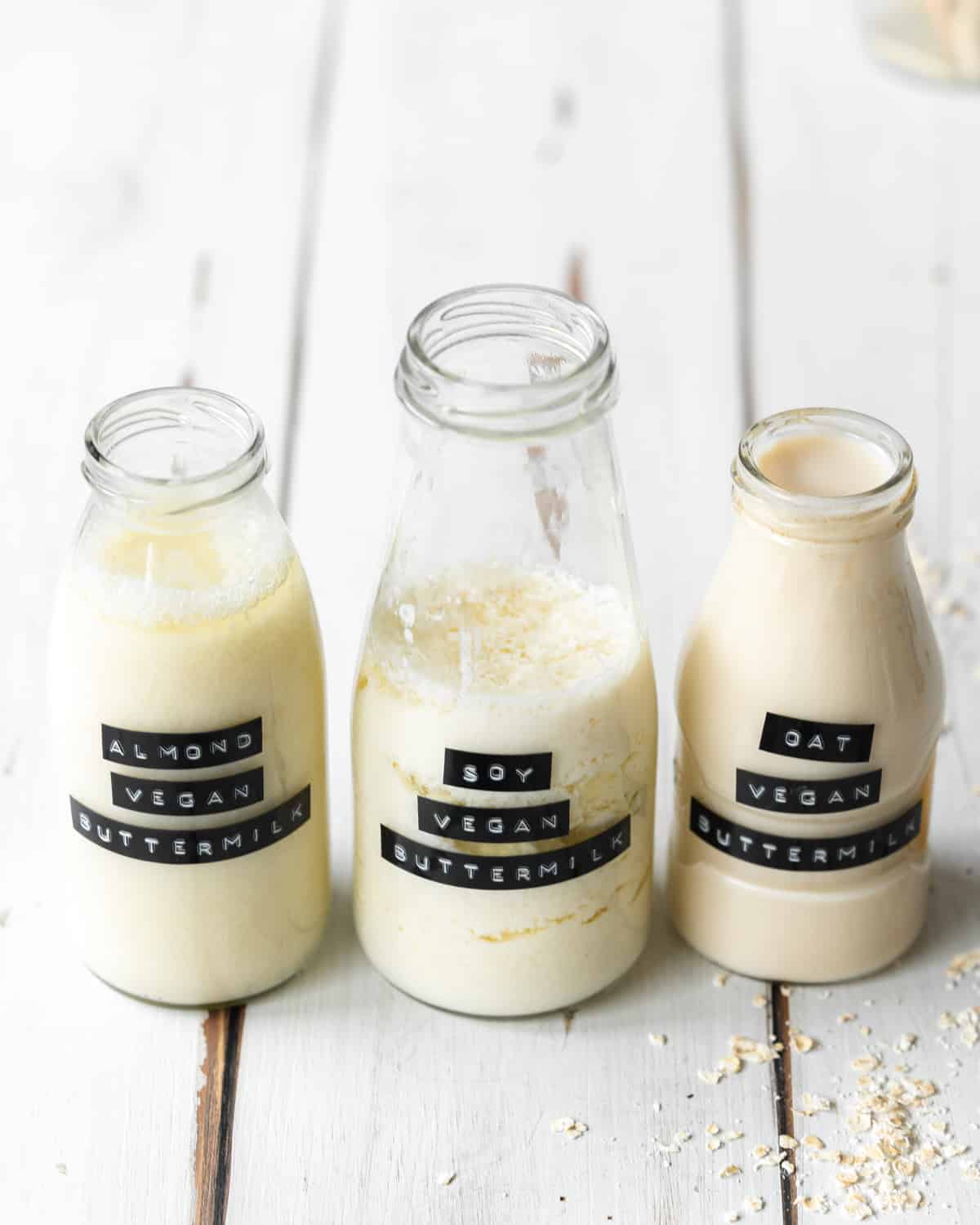
🧀 More Vegan Basics
📖 Recipe
How To Make Vegan Buttermilk
Ingredients
- 236 ml (1 cup) soy milk (room temperature) or almond milk or oat milk *see notes
- 1 tablespoon apple cider vinegar or white wine vinegar or lemon juice
Instructions
- Add the soy milk and apple cider vinegar to a mixing bowl or measuring jug. Stir to combine the ingredients and allow it to sit at room temperature for 5 minutes.
- The buttermilk is ready to use once it is curdled and has separated. If using almond milk or oat milk, it may take up to 10 minutes for the milk to curdle.
- Stir the buttermilk again and use immediately.
Notes
- Soy milk makes the best vegan alternative to buttermilk. Due to the higher protein content, it curdles much better than almond milk or oat milk.
- Unless a recipe calls for chilled buttermilk (like my vegan buttermilk pie crust), then it's best to use room-temperature ingredients.
© addictedtodates.com. All content and images are protected by copyright. If you want to share this recipe, please do so using the share buttons provided. Do not screenshot or republish the recipe or content in full. Instead, include a link to this post for the recipe. Thank you!

